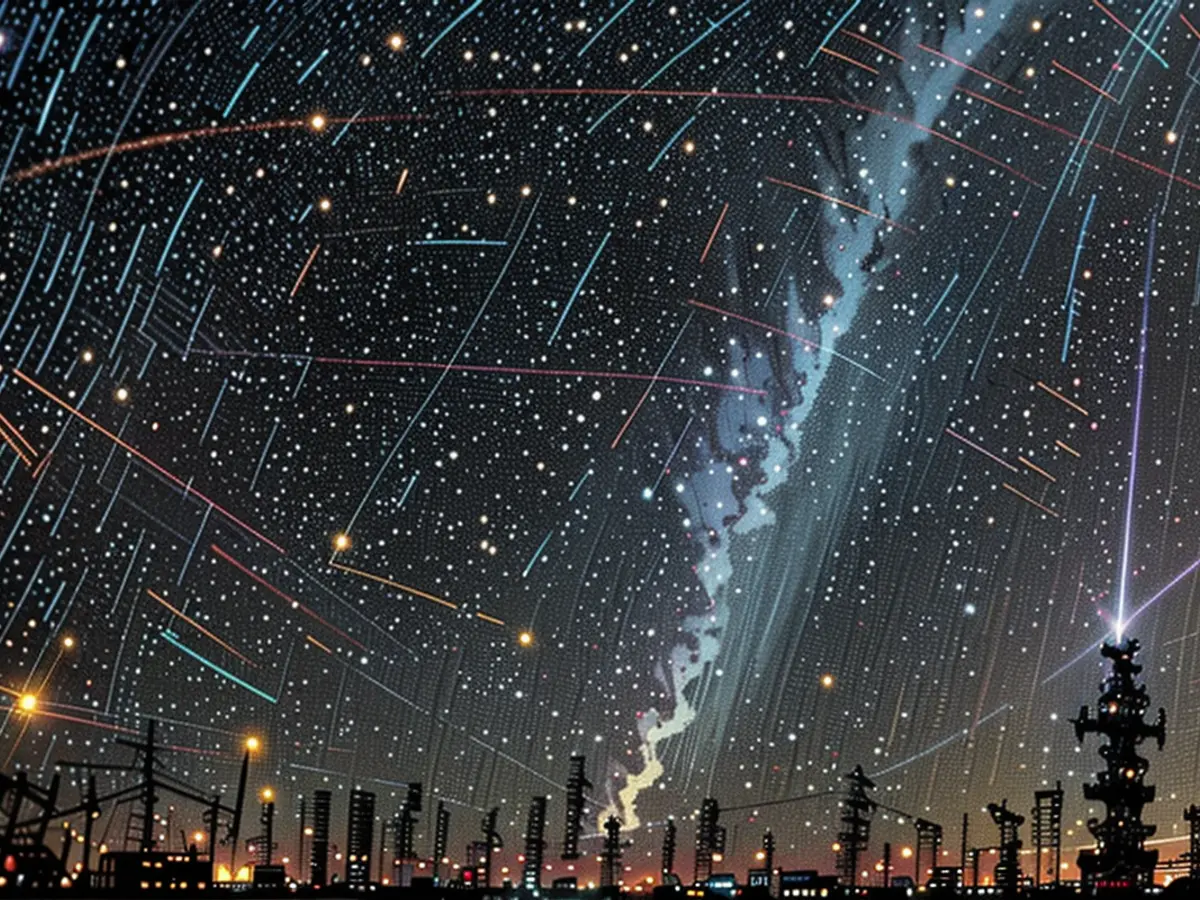Critics among astronomers voice concern over intensified Starlink satellites
After sending six trial versions of their new Starlink satellites into space in January, SpaceX has plans to grow their space fleet even further. Yet, this expansion is causing unease among astronomers. These forthcoming satellites could gleam up to five times more luminescent than the current ones.
The American aerospace company, SpaceX, is looking to expand its Starlink satellite network. These upcoming satellites, referred to as Direct-To-Cell (DTC), will not only serve as network providers like the existing Starlink satellites but they can be accessed directly via a smartphone without the need for an additional antenna, much like terrestrial mobile networks.
Astronomers worldwide are voicing their concerns, as these DTC satellites could beam up to five times more radiantly in the sky than the present Starlink satellites, according to researchers from the International Astronomical Union (IAU) in a recent online study.
On 3rd January, SpaceX launched six preliminary versions of the new satellites into orbit. Post successful tests, the company submitted an application to the American regulatory authorities for permission to launch 7500 DTC satellites, which will orbit at an altitude of 340 to 345 kilometers. This led to the IAU examining the possible ramifications of the new satellites.
New satellites are near five times as bright as previous Starlink satellites
Anthony Mallama and his team from the "IAU Center for the Protection of the Dark and Quiet Sky from Satellite Constellation Interference" gathered data from observers worldwide about the six prototypes already in orbit, along with precise measures using the MMT9 robotic telescope at the Russian Special Astrophysical Observatory in the Caucasus. Overall, it was found that the new satellites emit light up to 4.9 times more intensely than the current Starlink satellites. However, the scientists stress that these measurements merely present a preliminary impression, as it is yet unclear what role the satellite's antenna plays in its brightness.
SpaceX could dim the brightness
In the past, SpaceX has worked with astronomers, implementing numerous measures such as less reflective coatings to reduce the brightness of its satellites. "If similar measures are effectively applied to the DTC satellites, the increase in brightness could potentially be diminished by half, to 2.6 times," Mallama and his team write.
SpaceX currently manages over 6000 Starlink satellites in low Earth orbit, planning to ultimately have over 34,000. As the number of satellites increases, observing without interference becomes increasingly challenging for astronomers. For this reason, the IAU has been operating its own satellite monitoring service for two years, aiding astronomers in planning their observations.
The Commission, following the concerns raised by astronomers, has the responsibility to address the brightness issue of SpaceX's new Direct-To-Cell (DTC) satellites. If SpaceX implements less reflective coatings, as they did with previous satellites, the brightness of the DTC satellites could potentially be reduced by half, decreasing to 2.6 times their initial brightness.







